Man vs elephant: Why farmers across Africa and Asia are going to war

Nobody saw exactly what happened in the seconds leading up to Cappie Shamakuni's death, but a police report in the days after likened his injuries to that of a lynching.
The 55-year-old self employed handyman had been walking to his home in Kasane, northeastern Botswana, when he met a herd of elephants who had wandered into town seeking food and water. Both of his legs were broken just above the ankle.
His liver was crushed and his ribs broken, indicating he was finally killed by being stamped on.
Botswana is home to some 130,000 elephants – more than any other country in Africa – and its success in saving them from the poaching epidemic that has swept other parts of the continent has made it a mecca for wildlife tourism and the toast of environmentalists.
It has even brought Royal endorsement. In 2017, Prince Harry and Meghan Markle visited the country to help collar elephants for Kasane-based charity Elephants Without Borders.
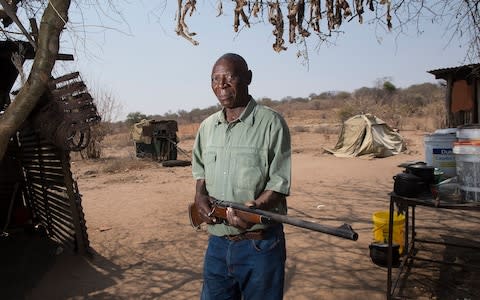
This week, the Duke of Sussex will return to Botswana during a trip to southern Africa with Meghan Markle and their son Archie.
But growing elephant numbers and dwindling resources are creating a bitter interspecies conflict that has claimed dozens of human and elephant lives and is now pitting the government against much of the world’s conservation establishment.
“We can see the impact of climate change in water, rainfall, water scarcity, and because of that fertile land is dying away. Which means humans and wildlife are competing for fertile land for production of food and vegetation,” said Kitso Mokaila, Botswana’s minister of environment.
Clashes between farmers and pachyderms occur anywhere elephants and people live in close proximity, and human elephant conflict (HEC in academic jargon) is a growing preoccupation of governments and conservationists across Africa and Asia.
Every year, elephants kill about 100 people (and people kill about 40 elephants) in crop-raiding and other incidents in India.
In Sri Lanka, tensions have been linked to an epidemic of suicide in rural communities as farmers suffer chronic sleep deprivation trying to keep the animals out of their fields.
But the trouble with elephants is just one part of a much wider challenge.
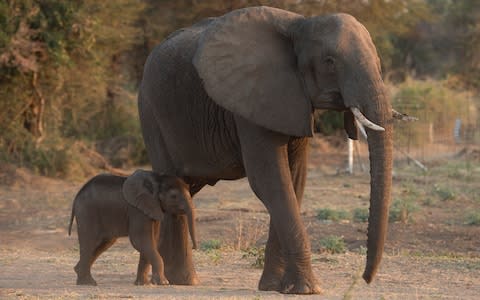
Whether it is bears versus farmers in the mountains of Slovenia or cheetahs versus shepherds on the Iranian plateau, conflicts between humans and wildlife are intensifying across the planet as habitat loss, growing populations, and climate change fuels competition for habitable and fertile land.
“It is not just Africa, it is not just India,” said John Hutton, a veteran of African conservation who chairs the IUCN red list of endangered species and directs the Luc Hoffmann Insitute. “The fact is, it is a very difficult accommodation to make with large mammals, especially large predators.”
“This is not about biology – this is about socio economics and politics, and the accommodation eventually made will be a political accommodation,” he said. “In the coming decades, the conflict between humans and wildlife as we currently frame it is likely to be reframed as a conflict between humans with different values and experiences.”
In Botswana, that political conflict is already in full swing.
In May, the government of president Mokgweetsi Masisi announced it would lift a five year ban on hunting elephants, in what it said was a necessary response to the stresses of growing populations and a changing climate.
But the move infuriated his predecessor Ian Khama, a self-styled wildlife champion who introduced the ban in 2015 and had hand-picked Mr Masisi when he stepped down as head of the ruling Botswana Democratic Party.
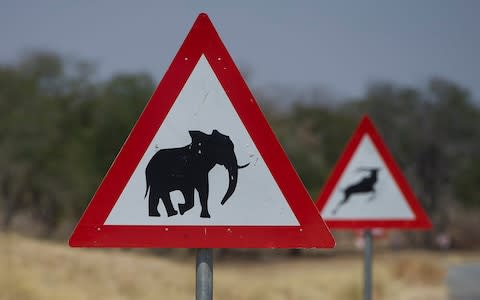
In an extraordinary move, Mr Khama accused his former protege of jeopardising Botswana’s international reputation, quit the ruling party, and threw his weight behind a new opposition movement, the Botswana Patriotic Front.
The pair will clash for the first time at a general election on October 23.
It has also fuelled tensions on the international stage.
Earlier this month Mr Mokaila and officials from neighbouring southern Africian countries accused Trevor Noah, the US-based South African comedian, of spreading “false information ‘fed’ on him by his anti-hunting Western paymasters” after he claimed the financial benefits of trophy hunting for rural communities would be negligible.
It follows angry scenes at a summit of the Convention on International Trade in Endangered Species last month when a proposal by Botswana, Zimbabwe, Zambia, and South Africa to legalise the ivory trade was defeated - something they view as part of a conservation agenda pushed by Western NGOs that ignores the concerns of local people.
Some conservationists and officials in Botswana have even accused western NGOs of "bribing" countries with fewer elephants - and thus less understanding of the problems of living with them - to vote against it.
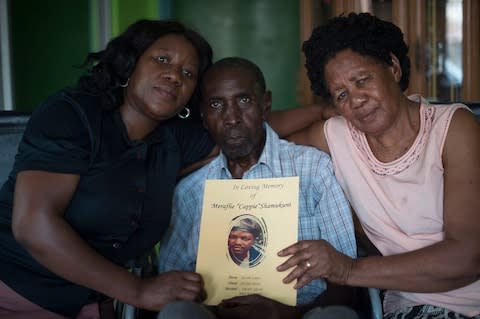
Nowhere is the resulting conflict more visible than in the Chobe enclave, an area of floodplain and forested hills in the north of the country where several thousand subsistence farmers eke out an existence raising cattle and farming maize and sorghum.
The drought sweeping southern Africa has hit this area hard. The landscape around the village of Parakangulu, which on the map is in the centre of a swamp, is one of parched sand, yellowed grass, and a handful of sorry looking palm trees and thorn bushes.
Underfoot, brown cannonballs of elephant dung are strewn everywhere and the trampling and raiding of fields has become so widespread, many farmers say they have not gathered a proper harvest for several years.
"They break your fences, they trample your fields when you plough, they eat your crops before you harvest,” says 70-year-old farmer Edward Temedi, 70. “There are too many, and they need culling.”
Twice, Mr Temedi has been nearly killed by marauding elephants, including one instance in 2017. "I was walking to my aunt's funeral when it came at me. I still don't know why," he says. "I hit it with my axe, she came for me again, so hit her again. Then the axe went flying out of my hand and I was thrown to the ground.”
Goring him through his right hip, the elephant lifted him on its tusks, dropped him to the ground, and set about trying to stamp him into the ground. It was only when his food container rolled out of his pack that he was saved.
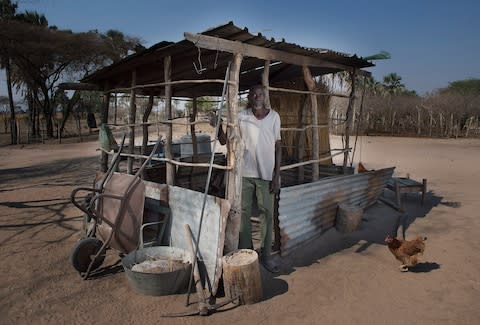
"I think it thought it was my head, because it turned towards it and savaged it," he said.
Three weeks ago Mr Temedi shot another elephant that threatened him on his cattle post, and he says he believes the government’s plan for limited hunting does not go far enough.
Many people here say the time has come for an all-out cull.
And there is anecdotal evidence that the animals can sense the growing threat.
“They don’t like anything that smells of people,” said Kgositkemotse Maera, the leader of the problem animal control unit in the Chobe enclave, a rapid response unit charged with defusing potentially deadly human-elephant encounters.
The animals' night raids on boreholes now include the apparently wanton – almost ritualised – vandalising of pumps and generators.
Like peacekeepers in many conflicts, Mr Maera's unit is overstretched and underfunded, with just a single ageing landcruiser to respond to calls that come in, often at night, to their 24-hour nuisance elephant hotline.
And the team admit non-lethal solutions are hit and miss.

Electric fences are effective but not foolproof, and for poor communities in remote areas, impractical.
Improvised alternatives include hanging strips of corrugated metal on fences to create a noise, fencing fields with beehives, or burning briskets of chilli peppers mixed with elephant dung, which is meant to produce a foul-smelling smoke no elephant can stand.
One farmer has even rigged long canvas ribbons between poles, which make a ghostly whumping sound in the wind meant to scare the animals off. It is a clever device, but no one is yet convinced that it works.
Which brings the conversation, inevitably, back to shooting.
Under the plans announced in May, the government will auction licenses for the right to shoot 158 elephants.
The wildlife department in Kasane has already received hundreds of applications for the raffle that allocates licenses to local citizens.
Advocates of the scheme, including Mr Mokaila, argue those numbers will have no impact on the overall population, but should restore deterrent “buffer zones” that prevented elephants from expanding their range into populated areas before the hunting ban.

The sale of licenses to foreign big game hunters should also provide a lucrative source of revenue to the village trusts that (in theory at least) channel the proceeds of both photographic and kinetic forms of tourism to local communities.
That in turn, argues a pro-hunting lobby that includes farmers, government officials, and professional hunters and taxidermists, will create an incentive for locals to protect their wildlife populations and arrest a worrying surge in poaching.
It is a neat solution on paper – good for farmers, elephants, and the economy.
But the policy has plenty of critics.
Tusk, the elephant charity led by the Duke of Cambridge, has warned that lifting the ban would undermine efforts to halt the illegal ivory trade that is responsible for a catastrophic collapse in elephant numbers across Africa since the 2000s.
And even conservationists who say there is a role for what they call “sustainable utilisation” worry that the current scheme will be open to abuse by unethical hunters.
“We are not optimistic that it will be well organised,” said Larry Patterson, a Kasane-based vet who works with both government agencies and NGOs on elephant conservation. “It could give the antis a lot of ammunition.”

Meanwhile Mr Maera, the leader of the problem animal control unit, points out that farmers have retained the right to shoot elephants in defence of life and property throughout the ban, and, like Mr Temedi earlier this month, do so not infrequently – but with little deterrent effect.
“I don’t think it works. We had a guy shoot an elephant the other month, and the very next day he was calling us up to tell us they were back,” he said.
In the very long term, it is hoped emigration might help. In 2011 Botswana, Angola, Namibia, Zambia, and Zimbabwe created the Kavango-Zambezi Transfrontier Conservation Area, an swathe of habitat range the size of Germany and Austria that should ease pressure on over-populated areas like the Chobe Enclave.
A longer term solution, he says, could be creating man-made water resources and artificial rivers deep in the bush. But that, he concedes would be time consuming and expensive.
It is a dilemma with no easy answer. But Botswana, India, and other elephant range states are hardly alone.
In Europe, the war between humans and large mammals was settled long ago: by humans wiping out the competition.
And when those mammals return, so do the conflicts: In June the Slovenian government announced it would cull 175 bears and 11 wolves, after a wildly successful program to bring them back from the brink of extinction provoked a backlash among rural voters.
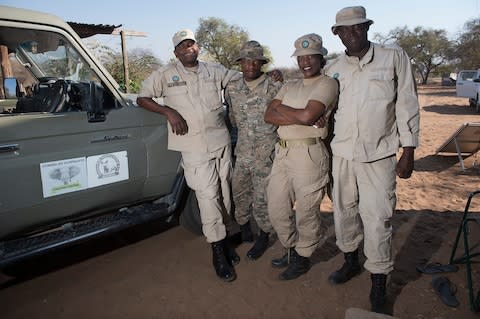
Earlier in the year the Italian government resisted a similar call to cull its wolves.
Even in Britain, where the last wolf was shot four centuries ago, the competition between farmers and wildlife is often deadly and controversial – witness the row over the annual cull of badgers to prevent bovine TB.
Finding a settlement – however uneasy – between preserving human lives and biodiversity will be one of the biggest global challenges of the coming century.
“The reality is we don’t know what the answers are. We are just beginning to work on them,” said Dr Hutton.
But patience in Kasane is rapidly running out.
“I don’t know if it is because with civilisation, people come to consider animals more important than human beings, or that some people are making so much money from the animals,” Dorcus Shamakuni, whose brother was trampled to death in May.
“But if an animal kills a human being, with relatives, with children to look after, it is just ‘oh, he was very unfortunate. What a shame.’ And if a human kills an animal it is some kind of tragedy, it is news all over the world.”

Protect yourself and your family by learning more about Global Health Security

 Yahoo News
Yahoo News 
